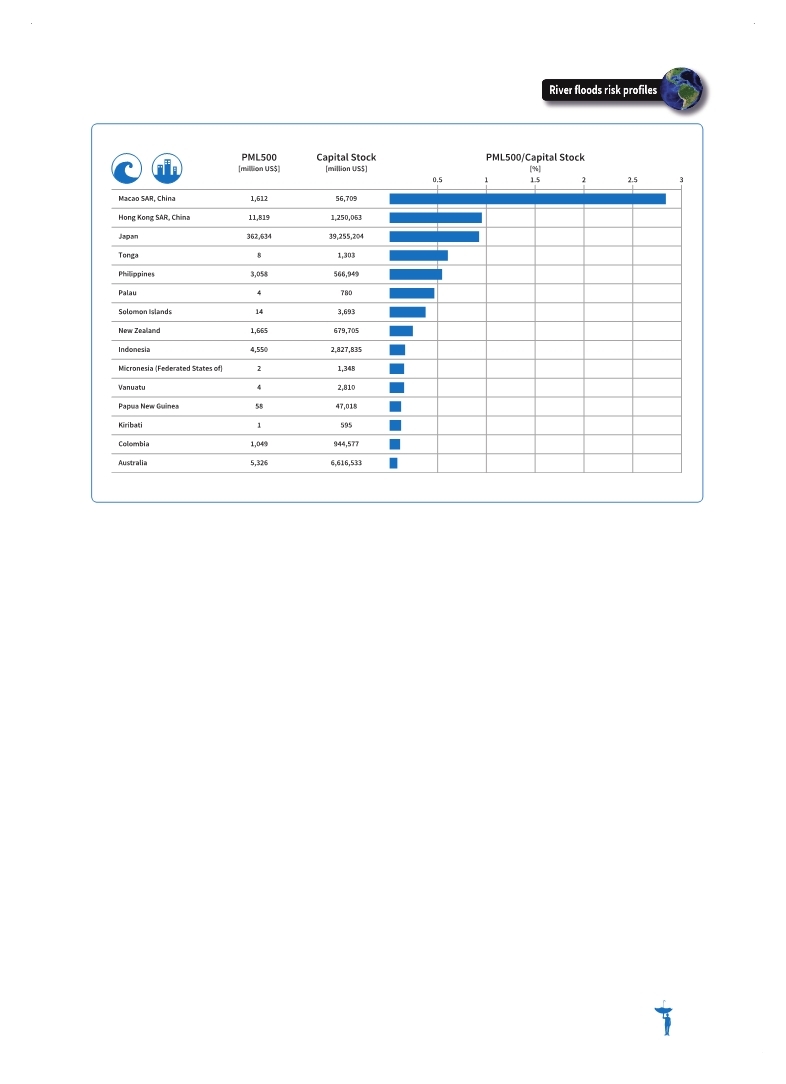 |
Global Assessment Report on Disaster Risk Reduction 2015
Making development sustainable: The future of disaster risk management |
 |
Global Assessment Report on Disaster Risk Reduction 2015
Making development sustainable: The future of disaster risk management |
|
|

71
While flood risk should be managed through prospective measures such as land-use planning, the continued industrial, commercial and residential development on floodplains, together with climate change, has made flooding a very dynamic risk. Corrective measures such as flood defences can protect against losses up to a certain threshold, and countries like Japan and the Netherlands have made major investments in flood protection. However, flood defences may encourage further development on floodplains, leading to devastating consequences if a low-frequency but high-severity loss above the protection threshold were to occur. In contrast, flood risk in low-income countries often reflects a lack of capacity to invest in flood protection.
As the 2011 Chao Phraya River floods in Thailand demonstrated, flooding may produce major correlated losses that equal those arising from earthquakes or tropical cyclones. The Thailand floods
also revealed the risk to global supply chains when industries are concentrated on floodplains (UNISDR, 2013a
UNISDR. 2013a,Global Assessment Report on Disaster Risk Reduction: From Shared Risk to Shared Value: the Business Case for Disaster Risk Reduction, Geneva, Switzerland: UNISDR.. . CEO Risk Forum. 2012,CEO Risk Forum, Spring 2012.. . Swiss Re. 2012,Flood – an underestimated risk: Inspect, inform, insure, Zurich.. . Floods also cause major losses in high-income countries. While the average annual economic damage from floods in the United Kingdom, for example, is in the range of US$250 million (Penning-Rowsell, 2014
Penning-Rowsell, Edmund C. 2014,A realistic assessment of fluvial and coastal flood risk in England and Wales, Transactions of the Institute of British Geographers, Vol. 40. Issue 1: 44-61 (published online: March 2014).. . (Source: UNISDR with data from Global Risk Assessment and the World Bank.)
Figure 3.18 Top 15 countries: Tsunami PML500 in relation to capital stock
|
 
Page 1Page 10Page 20Page 30Page 40Page 50Page 60Page 61Page 62Page 63Page 64Page 65Page 66Page 67Page 68Page 69Page 70Page 71Page 72->Page 73Page 74Page 75Page 76Page 77Page 78Page 79Page 80Page 81Page 82Page 83Page 84Page 85Page 90Page 100Page 110Page 120Page 130Page 140Page 150Page 160Page 170Page 180Page 190Page 200Page 210Page 220Page 230Page 240Page 250Page 260Page 270Page 280Page 290Page 300Page 310
|
|
 
|
 
|
